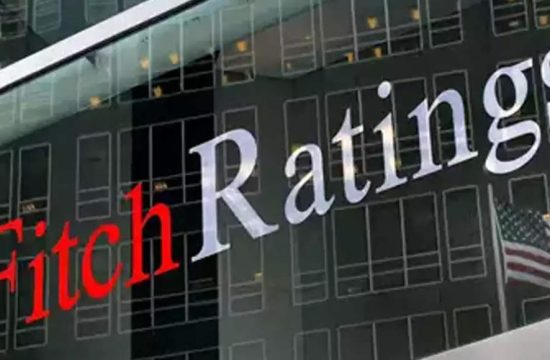The impending implementation of GST would undoubtedly impact one’s personal finances especially when it comes to financial services, albeit marginally. From the present rate of 15 percent, the GST on banking, insurance and investments such as real estate, mutual funds will see a hike of 3 percent as the GST will now be 18 percent on them.
Let’s see how each of them gets impacted.
GST and Insurance
Primarily, there are three major kinds of life insurance products – Term insurance plans, Ulips and Endowments (including money back). The applicability of service tax (in the current format) on their premium is not similar in all three of them.
The premium paid in life insurance policies represents two portions – risk coverage and savings. The service tax is only on the risk portion of the premium and not on savings portion.
As per the GST rules, the value of services (on which GST is to be imposed) in relation to life insurance business shall be:
(a) The gross premium reduced by the amount allocated for investment, or savings on behalf of the policy holder.
(b) In case of single premium annuity policies, ten per cent of single premium charged from the policy holder.
(c) In all other cases, 25 per cent of the premium in the first year and 12.5 cent of the premium in subsequent years. So, if the premium of an endowment plan is Rs 100, the GST of 18 percent will be applicable on the 25 percent of the premium i.e. on Rs 25, so, Rs 4.5 will be the GST amount.
(d) If the entire premium paid by the policy holder is only towards the risk cover in life insurance such as in term insurance plans, the GST of 18 percent will be on the entire premium.
Therefore, the immediate impact of GST would be the higher outgo (premium plus GST) in term and endowment plans, due to the increase in rate of tax on insurance following implementation of the GST. “In theory, this could mean an increase of 3% in premium from the existing applicable premium effective from 1st July 2017, across life, health and general insurance, however, some of this should be offset if tax on services availed by the industry are allowed to be taken into account to decrease insurers’ tax paid,” says Mathieu Verillaud, Chief Financial Officer, Bharti AXA General Insurance.
The policyholders may stand to benefit only if the insurance companies are allowed the benefit of input tax credit. “This unfortunately is not clear as of yet given the complexity of the state/centre structure of GST, this might drive some confusion as well as higher compliance and administrative costs for insurers. If these are not passed on to customers, prices might either go up, or stay low but will affect the market’s solvency and financial health,” says Verillaud.

Similar will be the impact on general insurance such as car, health and other non-life policies i.e. service tax (when replaced by GST) will increase by 3 percent of the premium amount. This would increase total outgo (premium plus tax).
Impact : The overall impact could be nominal but once implemented, both, existing and new policyholders will have to bear the additional cost. If the current premium of a term plan is Rs 10,000, (excluding the service tax of 15 percent) the GST impact will up the premium including tax by Rs 300 i.e from Rs 11,500 to Rs 11,800. While, comparing premium especially of term plans, make sure you are looking at premiums including or excluding GST for all the insurers. Nothing changes in the selection process as the GST impact will be same across insurers. Stick to a proper selection process while getting the right insurance policy.
GST and real estate
Real estate sector is marred with plethora of taxes both at the state and central level. GST hopefully will put in a more streamlined tax structure in place. “The heavily taxed real estate sector welcomes a single stable 12% GST rate, inclusive of the value of land and with full input tax credits,†says Rajeev Talwar, Chairman, NAREDCO.
But, will the home prices be lower than they are now in the post GST era? “NAREDCO is of the view that the actual tax incidence under GST would match or be lower than the existing multiple indirect taxes on the sector. The GST rate for work contracts which will also be offset by input credits, will provide for a seamless and simplified tax policyâ€, says Talwar.
However, it seems arriving at a conclusion regarding price impact could be a bit premature. “The GST rate is not the only important factor. The abatement rules as applicable under the service tax regime and the input tax credit facility for developers will determine if the effective tax incidence on real estate is lower or higher under GST,†says Anuj Puri, chairman of JLL Residential.
According to Puri, here’s why it will take time to conclude if the GST is tax neutral or tax adverse for the real state sector, ““Effectively, the composition scheme allowing for abatement against cost of land to the extent of 75% of the house cost for residential units priced under Rs 1 crore and less than 2000 sq. ft. makes the effective rate at 3.75%. In other cases, the abatement goes down to 70%, making the effective rate at 4%. This will go a long way in determining whether GST is tax neutral or tax adverse for real estateâ€.
The situation may not be same in the luxury segment. Surendra Hiranandani, Chairman & MD, House of Hiranandani says, “In the case of a premium development, the entire input tax credit is not sufficient to bring down the fresh tax liability to nil because of the taxes paid on other expenditures, having negligible impact.â€
The actual impact may be few months away after the implementation of GST. “More clarity will prevail once the GST gets implemented and the government clears its stand on the abatement available for the land cost for calculating service tax on under-construction projects.†says Hiranandani .
GST and banking
Transaction fees in financial services are likely to increase as the government has put these under the 18% tax bracket in the new GST regime. These services were so far taxed at 15% and the hike in the tax rate means that individuals will have to pay Rs 3 more for every Rs 100 paid as charges/fees for banking transactions. It may be mentioned that recently several banks starting with SBI introduced or increased service charges for multiple banking transactions including cash withdrawals exceeding a certain number of times in a month.
GST and mutual funds
The impact of GST on the returns of mutual funds will be largely marginal. The levy of GST will be on the total expense ratio (TER) of the mutual fund. The TER, commonly known as expense ratio of mutual fund houses, will also go up by 3 per cent. Expense ratio is the measure of the cost incurred by an investment company to operate its mutual fund.
As per the SEBI guidelines, AMC’s can levy charge within the limits prescribed under the regulations. So, if the limit is say, 2.25 percent of total assets under management, the service tax of 15 percent has to be within it.
Impact : Let’s assume the return on equity (market return) is 15 percent when the scheme’s TER is 2.25 (regular scheme) including the service tax. This means, TER without tax is 1.96. Now, to maintain the same TER (as it is capped), at a higher GST rate of 18 percent, the TER has to be lower at 1.91 percent. The AMC’s may have to absorb this marginal difference unless SEBI increases the TER cap.
Conclusion
Even though the hike will be nominal, taken together for all the insurance covers, the increase in the outflow could be something to account for by many policyholders. For someone paying annual premium for car, household, health, term plan, personal accident cover, a total of say Rs 50,000 a year could see a jump in premium outflow by Rs. 1,500 a year, with no additional risk coverage or benefits. The actual impact of GST on financial services including banking, insurance will however, be known only once it gets implemented. As a policyholder and an investor, no change, as of now, is required to be made in advance when it comes to GST.






